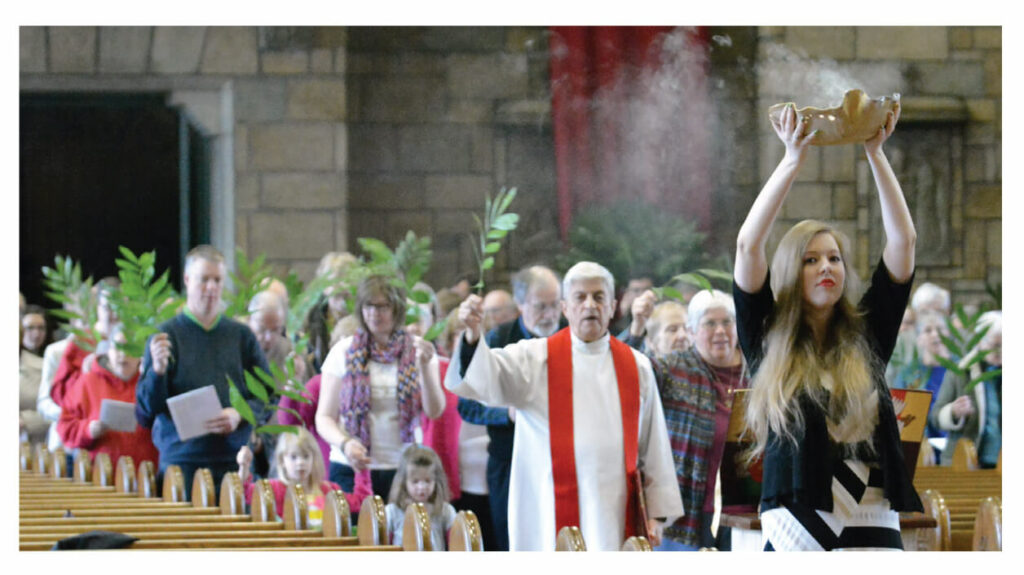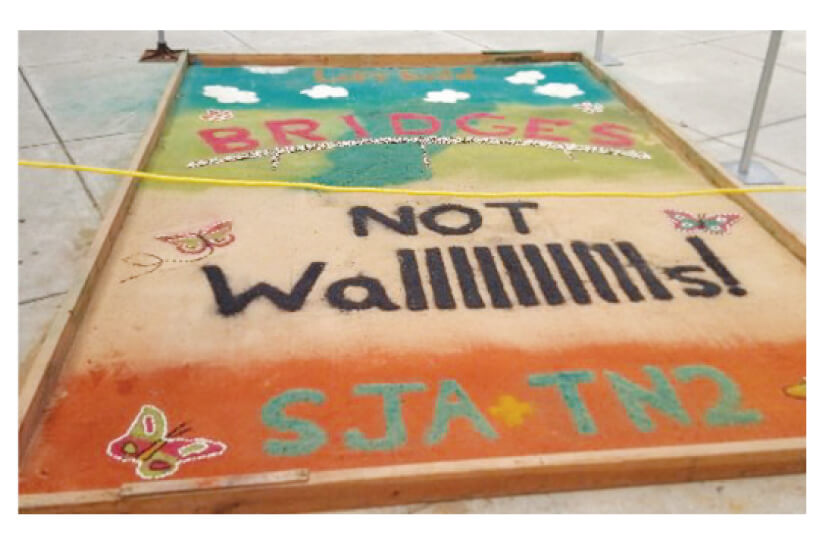by Joan Mitchell, CSJ

Holy Week begins on Palm Sunday. We process into church with blessed palms, imitating the people who welcomed Jesus to Jerusalem. On Holy Thursday we remember the meal that institutes the most daily and most significant of Christian rituals—Eucharist. On Good Friday we listen to the passion narrative, accompanying Jesus step by step through his suffering and death on the cross.
Our liturgical life today grows out of early Christians breaking bread together and visiting the sites along the way Jesus walked to the cross in Jerusalem. A pilgrim named Egeria journeyed to Jerusalem in A.D. 381-384. Her journals tell of crowds praying psalms, singing hymns, and spending the night visiting the places familiar from the passion narrative.
For many Central and Latin American countries Holy Week rituals become civic events. In San Antonio thousands of people gather in the square in front of the cathedral for an enactment of Jesus’ passion.

Some parishes make the Stations of the Cross outdoors with people taking turns carrying a cross. These rituals draw us physically into the story, reflecting as we walk in our own time and space.

On Holy Saturday my grandniece Maya and her mom helped make a mandala for the parish children’s Mass on Easter morning. The tradition of sand-painting comes from Guatemala, the country from which Maya is adopted. In Guatemala the people in villages create elaborate sand-paintings on their streets that mark the way for Holy Week processions.
Maya helped make the words “bridges not walls” on the colorful mandala for the sidewalk in front of the church. The St. Joan of Arc parish community invites the Heart of the Beast Puppet Theater to join in the Easter celebration. In the second photo a Jesus puppet leads children dressed as animal puppets in the joyful, sunny Easter procession.
- What memory of Holy Week holds special meaning and insight for you?
